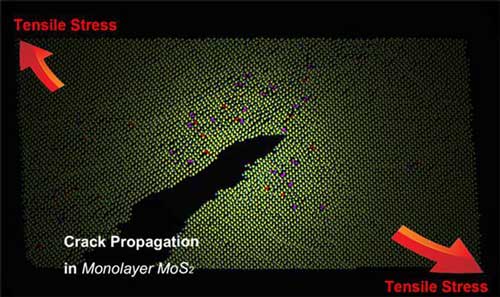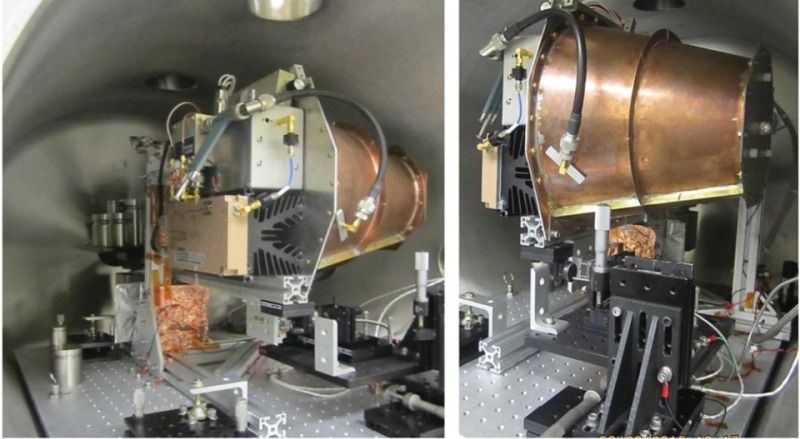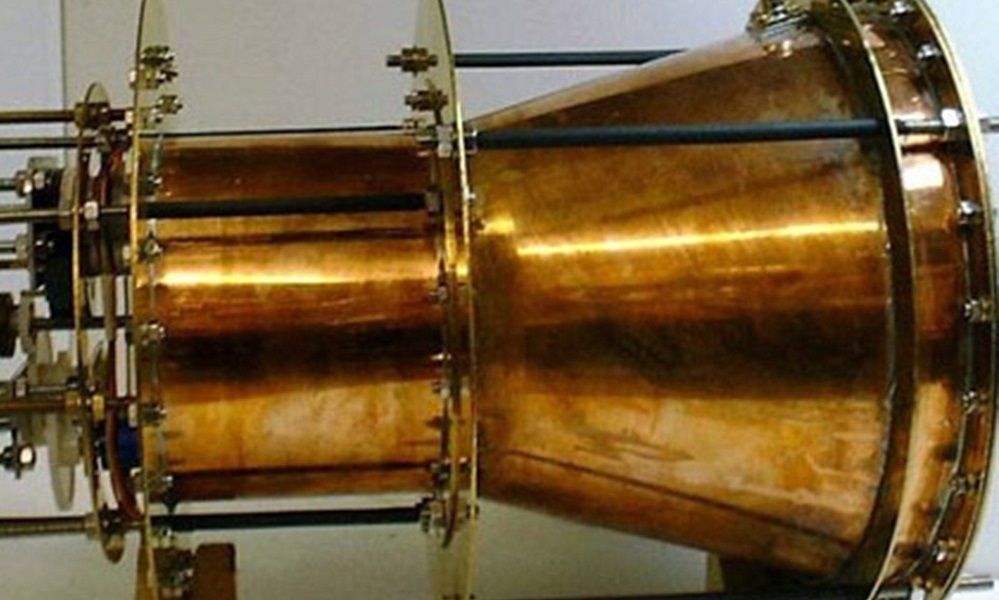Physicists have long puzzled over whether black holes destroy information or conserve it – now a proposed lab experiment could use a plasma wave to find out.




Cracks sank the ‘unsinkable’ Titanic; decrease the performance of touchscreens and erode teeth. We are familiar with cracks in big or small three-dimensional (3D) objects, but how do thin two-dimensional (2D) materials crack? 2D materials, like molybdenum disulfide (MoS2), have emerged as an important asset for future electronic and photoelectric devices.
However, the mechanical properties of 2D materials are expected to differ greatly from 3D materials.
Scientists at the Center for Integrated Nanostructure Physics (CINAP), within the Institute for Basic Science (IBS) published, on Nature Communications (“Dynamical observations on the crack tip zone and stress corrosion of two-dimensional MoS2”), the first observation of 2D MoS2 cracking at the atomic level. This study is expected to contribute to the applications of new 2D materials.

The big bang poses a big question: if it was indeed the cataclysm that blasted our universe into existence 13.7 billion years ago, what sparked it? Three researchers at the Perimeter Institute for Theoretical Physics and the University of Waterloo propose that the big bang could be the three-dimensional “mirage” of a collapsing star in a universe profoundly different than our own.

Based on a study of the optical properties of novel ultrathin semiconductors, researchers of Ludwig-Maximilians-Universität München (LMU) in Munich have developed a method for rapid and efficient characterization of these materials.
Chemical compounds based on elements that belong to the so-called transition metals can be processed to yield atomically thin two-dimensional crystals consisting of a monolayer of the composite in question. The resulting materials are semiconductors with surprising optical properties. In cooperation with American colleagues, a team of LMU physicists led by Alexander Högele has now explored the properties of thin-film semiconductors made up of transition metal dichalcogenides (TMDs).
The researchers report their findings in the journal Nature Nanotechnology (“Opto-valleytronic imaging of atomically thin semiconductors”).





In what appears to be the latest breakthrough in space travel technology, China claims it has made a great leap forward with its ‘reactionless’ Electromagnetic Drive, or simply, EmDrive – an engine that uses only the power of electromagnetic radiation contained within a microwave cavity.
The EmDrive flies in the face of physics – going against the law of conservation of movement; producing mechanical movement but without an exchange of matter.